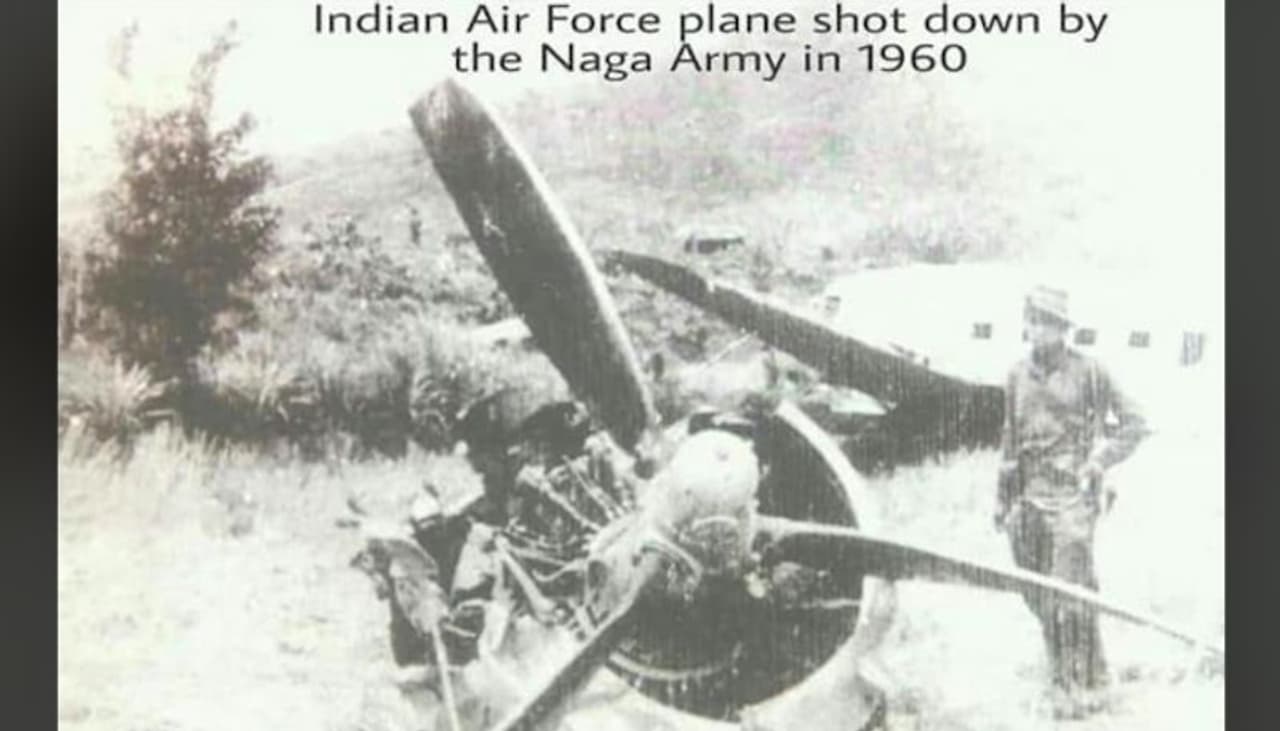- Home
- India
- India Defence
- From the IAF Vault: Story of the Dakota crew that spent 21 months in captivity
From the IAF Vault: Story of the Dakota crew that spent 21 months in captivity
IAF historian Anchit Gupta narrates the story of the crew of a Dakota aircraft of the Indian Air Force that was shot down over Purr village in Nagaland on August 26, 1960.

On September 5, 1960, the then Defence Minister Vengalil Krishnan Krishna Menon made a lengthy statement in Parliament about a Dakota aircraft of the Indian Air Force that was shot down over Purr village in Nagaland on August 26. While the wreckage was located, the crew was missing. This is their story.
On August 14, 1960, Naga hostiles attacked the Assam Rifles post at the Thuda(Phor/Purr village). The monsoon was at its height and rivers were in full spate. The attack was launched after destroying the bridges on all the rivers. As the attack continued, the Assam Rifles' supplies and ammunition started running out.

Two Dakotas from Jorhat, likely of the 49 Squadron, were assigned the task of dropping supplies at the post. The aircraft had to fly low, amidst small arms fire at them. One aircraft was able to drop water, but neither was successful in helping replenish the post. Both aircraft had bullet holes.
The second aircraft, HJ-233, had four crew -- Flight Lieutenant AS Singha (Pilot, 4679), Flag Officer RE Raphael (Co-pilot, 5660), Flag Officer CS Misra (Nav, 5455) and Seargent JC Chowdhury (Signaller) -- besides five ejection crew, who were Armymen. Its first drop was not on the mark due to the firing.
During the second run by the HJ-233, both engines of the aircraft were hit and one cut out. Flt Lt Singha managed to crash-land in a paddy field in Zathsu in the mountainous terrain without serious injury to any of his crew. Surrounded and fired upon, the four crew and five passengers were captured.
An attempt was made by the Indian Army to reach them by crossing the river separating them from the hostiles. The mission was ordered by the General Officer Commanding Fourth Division, General Misra and former Wing Commander Rammuny. VKK Menon best described the attempt, which sadly cost lives (read above).
On September 3, troops finally reached the Dakota. But the crew was missing. In two-three weeks, five passengers were released by the Nagas. Over the entire next two years, reconnaissance and search and rescue sorties were persistently yet unsuccessfully flown by all sorts of aircraft, including Dakotas, Otters, Mi-4s and Alouettes.
This effort may have included some sorties even by Vampire aircraft of the 101 and 4 Squadron. In the best traditions of the IAF, flying operations were led by the Air Officer Commanding-in-Chief of the Eastern Air Command, Air Vice Marshal KL Sondhi who personally flew over the area.
Gavin Young of London-based 'The Observer' newspaper travelled to Nagaland and managed to interview the crew. "We sat together in the bamboo officers' mess of a Naga Home Guard camp, miles from the Indo-Burmese border. Smiling Nagas, In battledress, with rifles, Sten and Tommy-guns slung, handed out tea and cigarettes. Singha and his fellow prisoners were bearded & thin but cheerful. They were keen to know the results of last year's Olympic Games. For months they had received no news of the outside world."
CS Misra reminisces, "During our captivity of nearly 21 months, we used to hear low-flying jets overhead from time to time. Our captors told us that 'Indians' were trying to hit isolated huts. They used to get scared and run into jungle but not before jamming logs into the narrow opening of our prison hut, remarking that it would be a pity if IAF aircraft killed their own in captivity. They, of course, never went too far away keeping us under watch. Were these air raids on Nagas, perhaps not chronicled or could be mere figments of the imagination of that hoary past, one wonders..."
The Dakota crew were finally released on May 5, 1962. They arrived in Rangoon on a Burmese Air Force plane. Each of them carried a stick as they landed. An IAF aircraft fetched them from Rangoon to Delhi on May 12, 1962 afternoon, bringing to an end 617 days of captivity.
An ex-Gooney Bird pilot added "I had a tiny old black and white aerial photo of the HJ-233, absolutely intact, except for props and half a wing, on its belly, on a tiny plot of flat ground, next to a small stream, exceptional force landing with hardly any damage or injury to anyone."
Stay updated with the Breaking News Today and Latest News from across India and around the world. Get real-time updates, in-depth analysis, and comprehensive coverage of India News, World News, Indian Defence News, Kerala News, and Karnataka News. From politics to current affairs, follow every major story as it unfolds. Download the Asianet News Official App to stay informed anytime, anywhere.